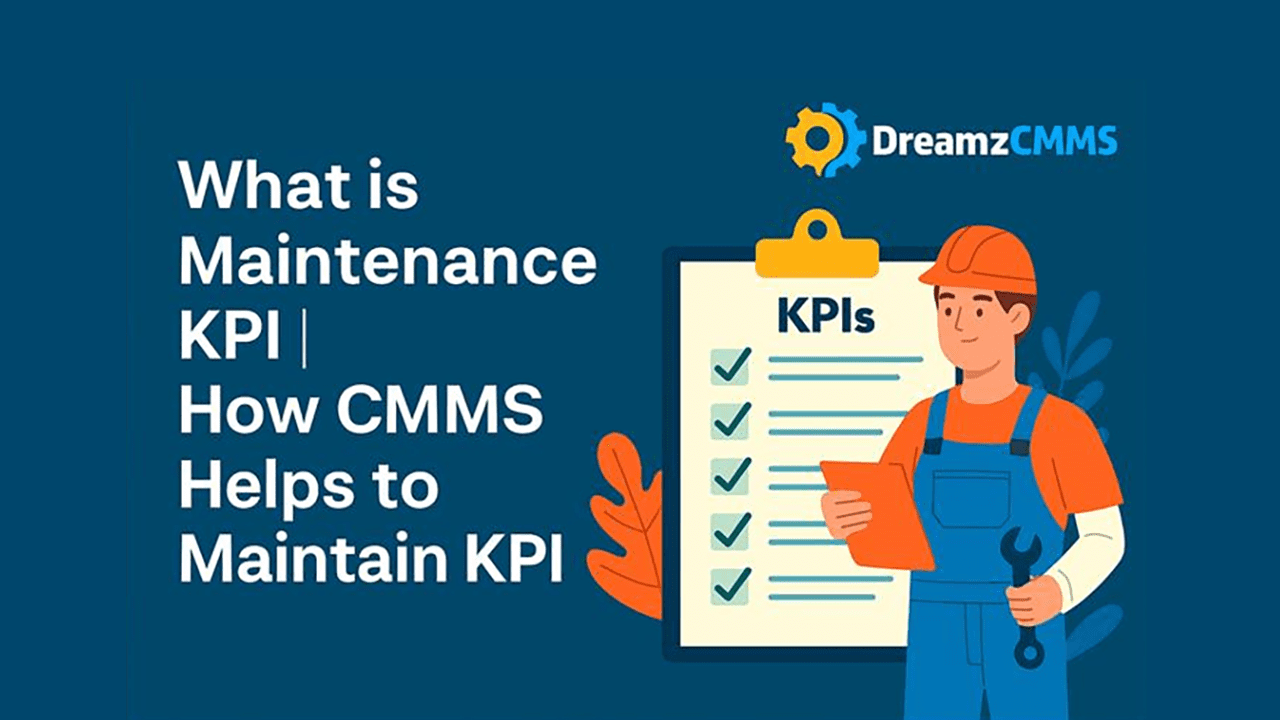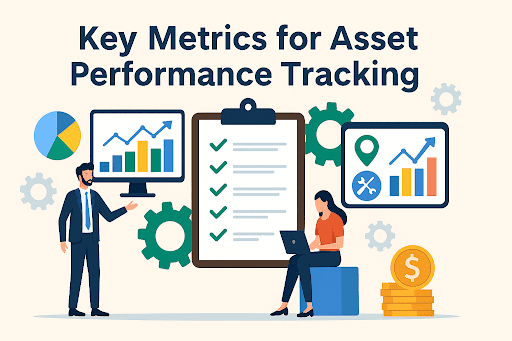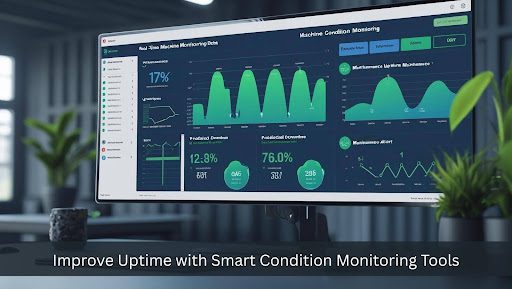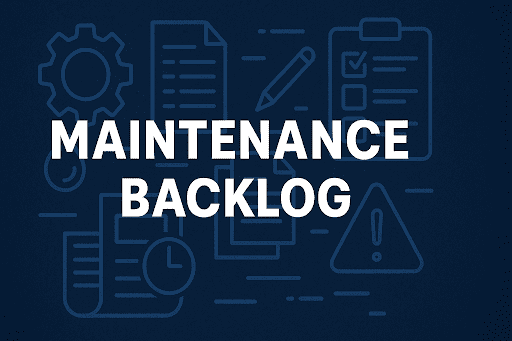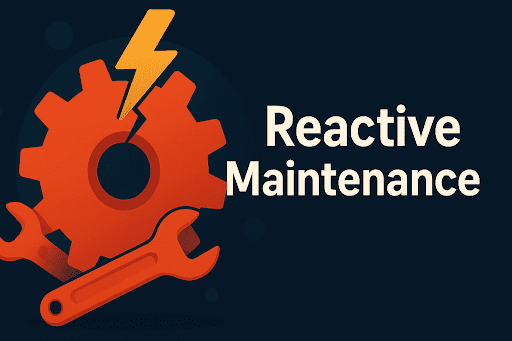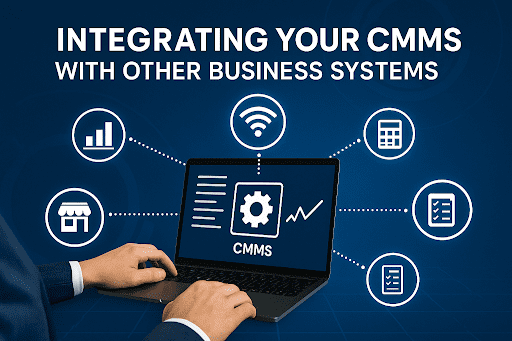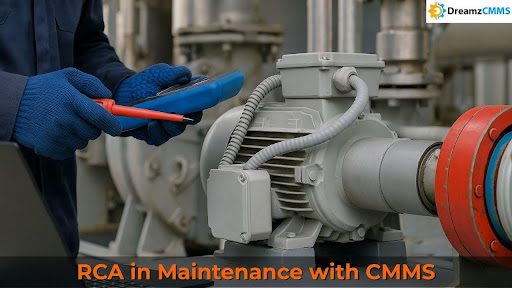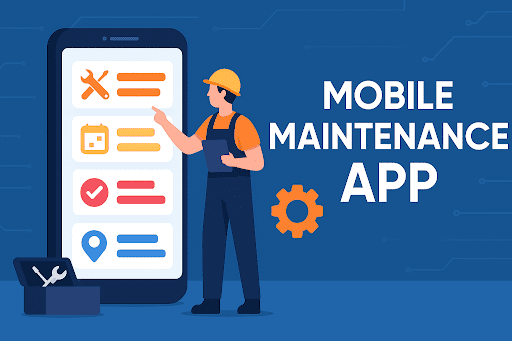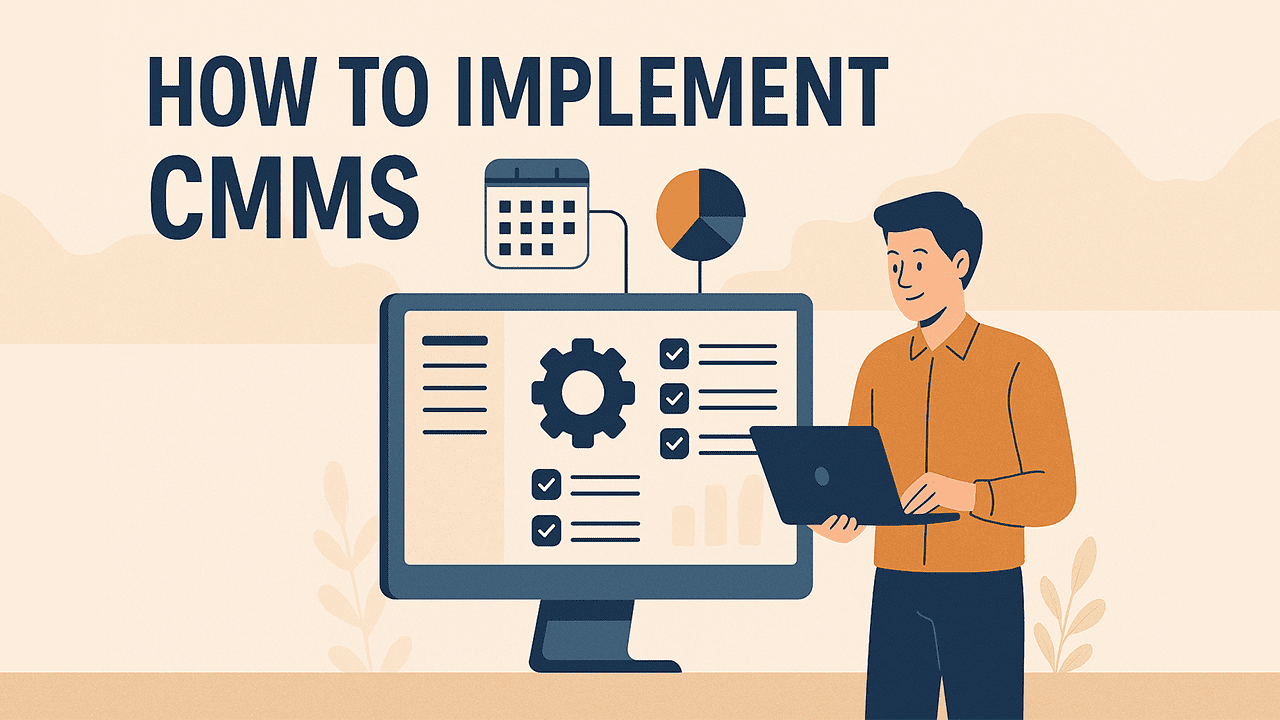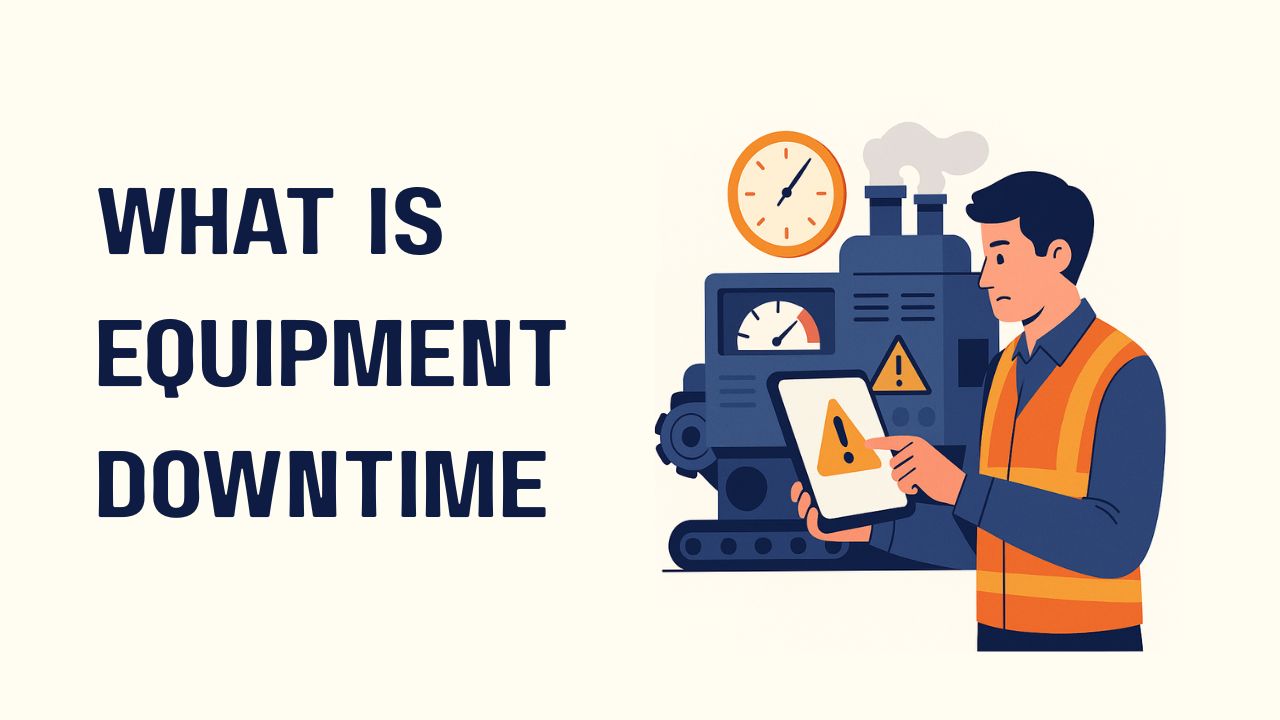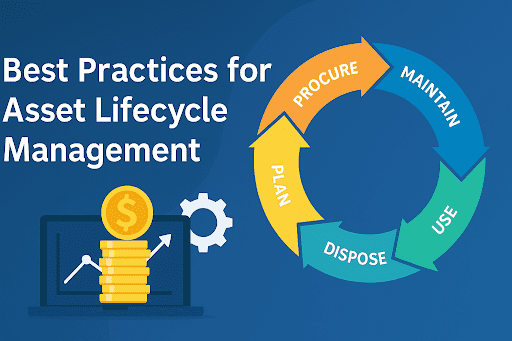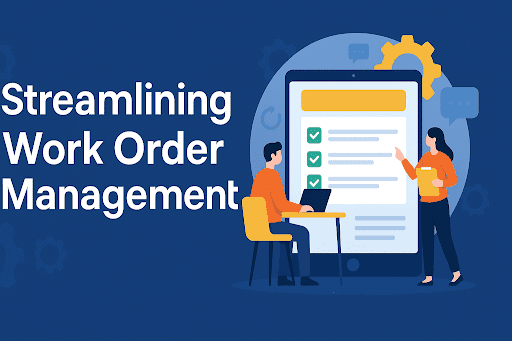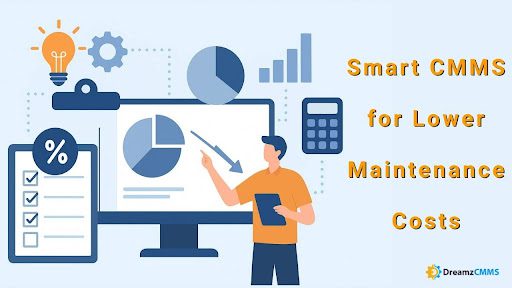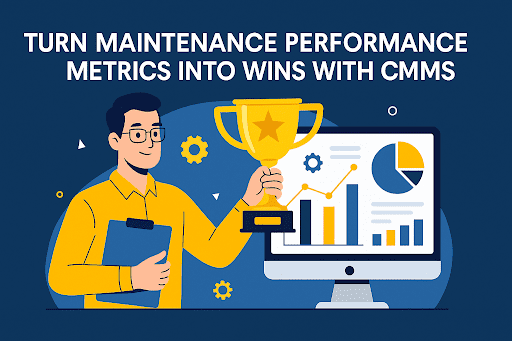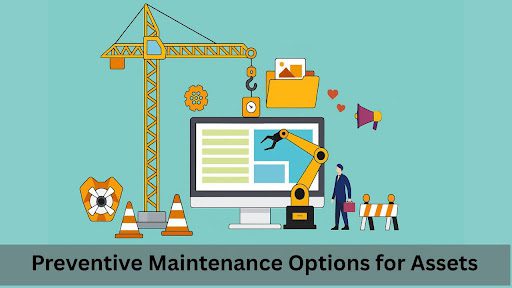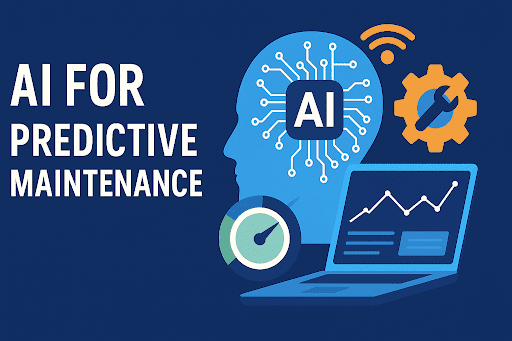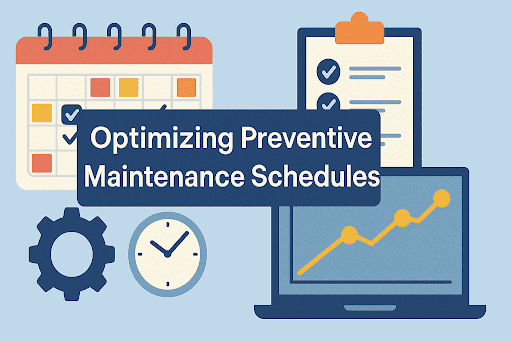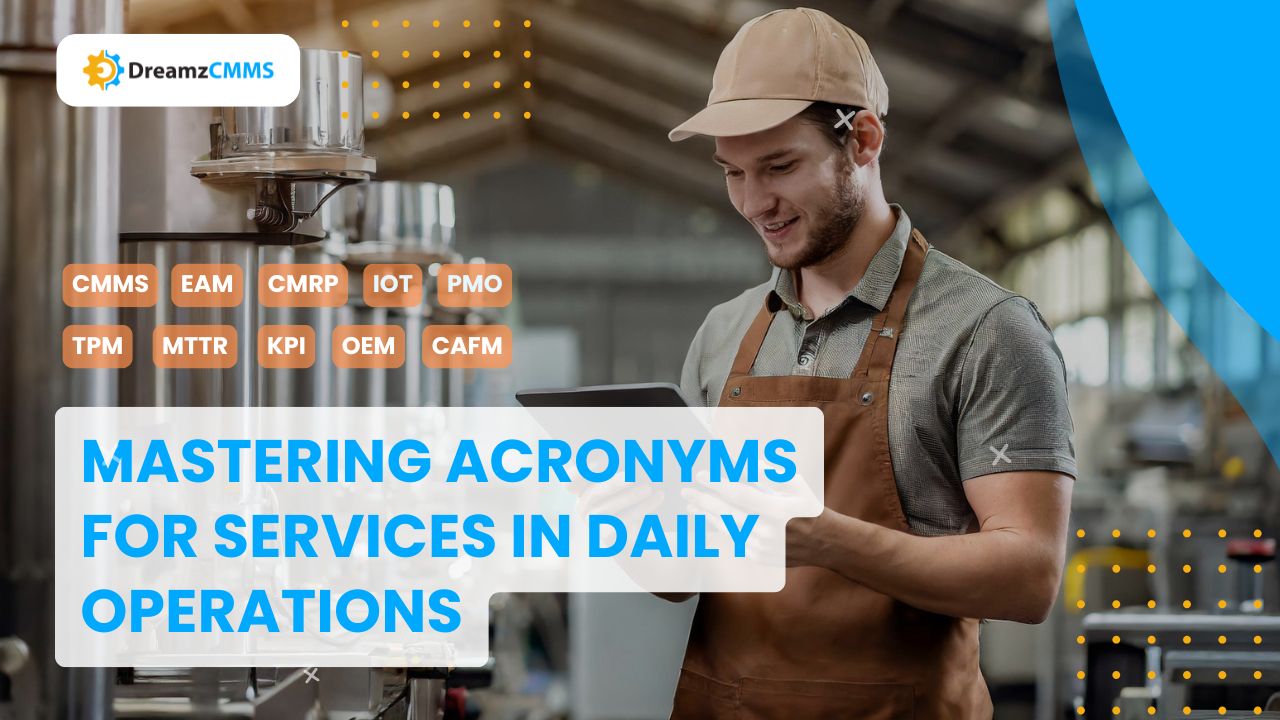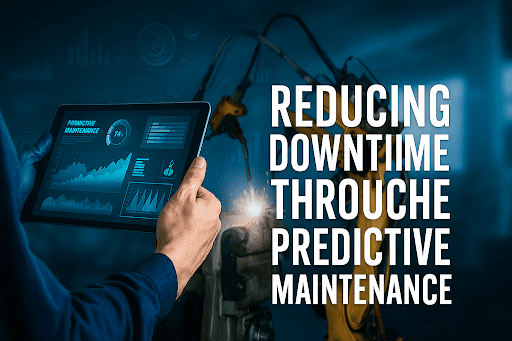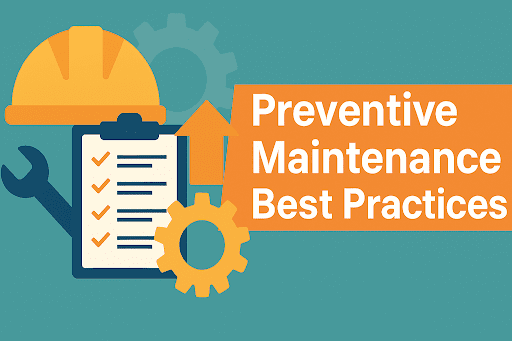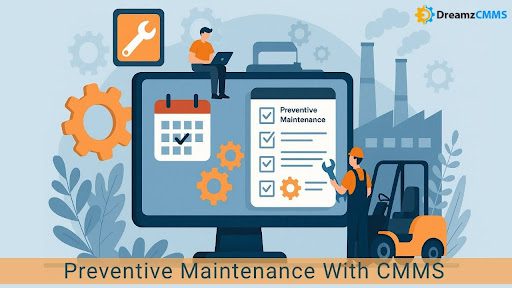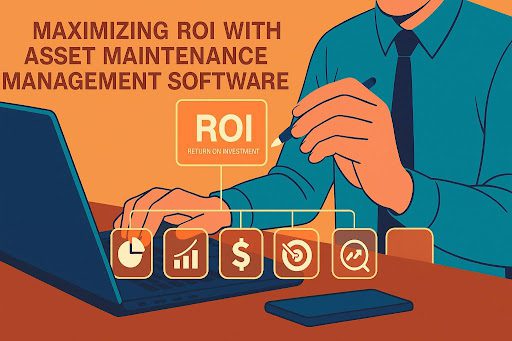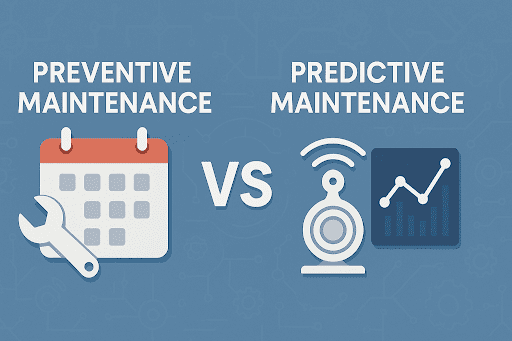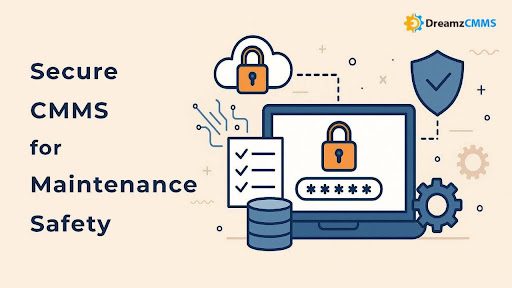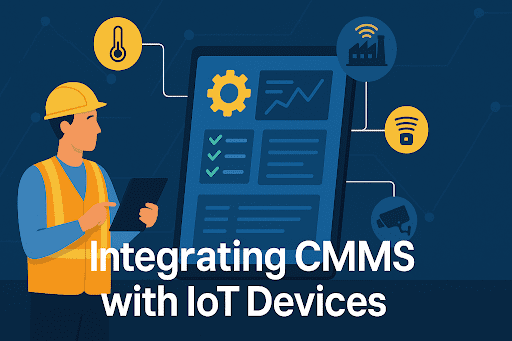 BACK TO Blog
BACK TO Blog
Asset Rental Management
Asset Maintenance
Introduction If you have ever had a production line grind to a halt because of a part you did not even know could fail, you already know how critical maintenance is. The surprising part? A lot of companies still treat it like an afterthought. That is starting to change, fast.
- April 10, 2025
- Debraj Basu
- 17 minutes read

- April 10, 2025
- Debraj Basu
- 17 minutes read
Introduction
If you have ever had a production line grind to a halt because of a part you did not even know could fail, you already know how critical maintenance is. The surprising part? A lot of companies still treat it like an afterthought. That is starting to change, fast.
Today, Asset Maintenance Management is becoming a key business priority. It is not just about keeping things running, it is about doing it smarter, so you are not constantly chasing problems. Whether you are in charge of a few buildings or managing hundreds of machines across multiple sites, the reality is the same: things break, and you do not want to be caught off guard.
You have probably heard about CMMS platforms or maintenance software. They are more than just another tech acronym. These systems help track your equipment, schedule repairs, and reduce surprises. And honestly, they are a huge upgrade from spreadsheets or whatever method your team has been patching together.
Upgrade to Smarter MaintenanceStay audit-ready and organized with powerful Asset Maintenance Management Software designed for smarter operations. |
What has Actually Changed?
Maintenance used to be about routine checklists and a lot of guesswork. Now, companies are using sensors, alerts, and asset tracking software to make better calls. It is not just about reacting anymore. It's about preventing issues and getting the most out of every asset because every minute of downtime hits the bottom line.
But the real shift? It is how leadership views maintenance. CFOs care because the numbers matter. COOs care because delays cost contracts. Everyone from the top floor to the shop floor benefits when assets just work without drama.
The Four Ways Most Teams Handle Maintenance
There is no “right” way to manage asset maintenance. In practice, companies blend several methods based on the criticality of the equipment and what resources they have. Here are the four maintenance strategies most teams lean on.
1. The Preventive Route
You fix things before they break. Regular inspections, part replacements, cleaning and do whatever that helps to avoid problems. It is reliable and easy to plan around. Not perfect, but miles better than putting out fires all day.
2. Predictive Maintenance
Here, data is your best friend. You have got sensors checking conditions in real time. If something gets too hot, vibrates too much, or shifts out of spec, you know. No guesswork. You only jump in when the numbers say it is time. This is where maintenance data analytics start saving real money.
3. The Old-school (Reactive Maintenance)
Wait for it to fail. Then fix it. Sounds risky and it can be. But for some equipment, it works. Just not for the ones that bring everything else down with them.
4. RCM (Reliability-Centered Maintenance)
RCM is where you take a step back and look at the big picture. You identify which assets are essential, what the risks are, and how you can maintain them most effectively. Some equipment might need regular checks. Others might be fine with reactive handling. The point is, it is not random but it is intentional.
This approach supports both maintenance cost reduction and smart resource allocation. And in most cases, it is the strategy that brings the best long-term results.
What Does This Mean for Your Operation?
Every time a critical system goes offline, it is not just about repair costs. You lose time, productivity, and possibly customer trust. You might even face regulatory risks.
That is why companies that use maintenance software backed by a solid strategy tend to outperform their competitors. They have a handle on asset conditions. Their work order management is streamlined. Their compliance documentation is always ready.
And for the leaders, that kind of visibility and control over operations is golden. That alone is worth the upgrade.
What Is CMMS?
A Computerized Maintenance Management System is just a digital platform that helps you organize everything maintenance-related. Think of it as your team's command center.
Instead of chasing down paperwork or scrolling through spreadsheets, you have got one dashboard for everything: work orders, asset details, service history, spare parts, compliance logs. You name it and it is just a click away.
It does not replace your team. It just gives them tools to do their jobs better, faster, and with fewer dropped balls.
Where Does It Make a Difference?
Here is how a solid maintenance management system changes day-to-day operations:
1. Work Orders Are No Longer Chaos
Got a broken pump? A flickering light in a production area? Instead of sticky notes or group texts, someone logs it, assigns it, and tracks it. The technician sees what is wrong, where it is, and what tools they will need. It is clear and traceable.
This kind of work order management is not just cleaner rather it saves time and reduces communication gaps.
2. Scheduling Gets Smarter
You do not have to guess when an asset needs service. You set rules based on time, usage, or even condition. Your CMMS sends reminders or auto-generates tasks so nothing slips through the cracks. That is how you master maintenance planning and scheduling without burning out your team.
3. Real-time Insights Are a Game Changer
With sensors or mobile updates feeding into your system, you know what is happening right now. Got a temperature spike? See it before things overheat. Got an overdue check? The system flags it.
This level of real-time visibility is especially helpful for teams managing a lot of moving parts or assets spread across multiple locations.
4. Compliance Stops Being a Nightmare
Audits can be stressful. Whether it’s OSHA, EPA, ISO, or internal audits, pulling records last minute is never fun. But when your maintenance software stores all activity, inspections, and certifications digitally, you are always ready.
5. Reporting That Actually Helps
CMMS systems let you build custom reports. Want to know which machine fails the most? Or how long does it really take to close a work order? You have it all. These reports help the decision-makers spot trends, justify investments, and make better decisions overall.
What Does It Mean for the Business?
For leadership, implementing a CMMS software is not just an IT upgrade. It is a move towards lower operating costs, better asset utilization, and smoother compliance.
When maintenance is predictable, assets last longer. When issues are caught early, repair costs go down. And when your team is not swamped with last-minute crises, you get better performance across the board.
That is a cost-effective maintenance strategy in practice without compromising standards.
The Real Incentive of Proactive Maintenance Strategies
For any business that depends on equipment, waiting until something breaks is the most expensive way to handle maintenance. And yet, that is still how many teams operate. At first glance, skipping routine checks or postponing small repairs might save time and money. But when a machine fails unexpectedly during peak hours the damage can ripple through your entire operation.
That is why more organizations are leaning into proactive maintenance strategies. Instead of reacting to problems, they are planning ahead using real data, smart systems, and structured workflows to stay ahead of wear and tear resulting in lower repair bills, longer equipment life, less downtime, and stronger compliance.
Here is how a proactive mindset changes the game and why it is quickly becoming standard in modern asset maintenance management.
1. Planning Ahead Cuts the Maintenance Costs
Every emergency repair has hidden expenses: overtime pay, rush shipping, and delays that impact output.
With CMMS software, apart from tracking service history and asset condition, teams can schedule inspections and fixes at the right time. Not too early, not too late. You only spend where and when it is truly needed. That is the foundation of maintenance cost reduction where you can fix problems early and on your terms.
2. Downtime Does Not Steal Your Time or Revenue
Unexpected equipment failure slows down entire workflows, causes missed deadlines, and hurts your brand reputation.
By using predictive maintenance strategies where IoT sensors or diagnostic tools monitor real-time conditions, your teams can catch early warning signs. If a pump’s running hotter than usual or a machine starts vibrating oddly, the system alerts you before a breakdown occurs.
Industry reports suggest that better maintenance planning can cut unplanned downtime by as much as 30 - 40%. That is a huge win for any operation trying to stay lean and competitive.
3. Extend the Lifespan of Your Assets
Every skipped inspection or delayed repair puts more wear on your equipment. That wear adds up and suddenly, assets that should have lasted 10 years start failing in five.
With proactive maintenance, the goal is to stretch out that asset’s useful life. Regular servicing, minor tweaks, and catching failure points early, all add up. It is not just about saving money on replacements rather it is about getting the most from every piece of equipment you already own.
4. Compliance Gets Easier to Handle
If your industry has to meet OSHA, ISO, or EPA standards, you know how critical documentation is. Miss one inspection, and that is where things can fall apart. Modern maintenance management systems make this part much easier. Every work order, inspection, and repair is logged automatically. That means when auditors ask for a record, you can generate it in seconds.
You can also set up recurring tasks in your work order management dashboard, so you never miss a regulatory requirement again.
5. Safer Operations, Fewer Surprises
A well-maintained equipment is safer equipment. From conveyor belts to HVAC systems, anything that runs under stress poses a risk if neglected.
With clear maintenance planning and scheduling, digital checklists, and instant notifications, your team can spot and address small hazards before they cause real damage whether it is to the equipment or to people.
Businesses that adopt proactive maintenance strategies see fewer workplace injuries and fewer compliance issues.
What Proactive Really Means?
Going proactive does not mean overspending. It is not about fixing every little thing immediately or replacing parts too early. It is about targeted, informed maintenance that is based on actual asset needs and usage patterns. With a proactive approach powered by asset tracking software and intelligent CMMS platforms, you can get ahead of the curve.
You will know which assets are underperforming, which ones need servicing, and how your budget is being spent. You will also be able to make a strong business case to leadership, showing how smarter maintenance leads directly to lower risk and stronger ROI.
In short, proactive maintenance is not just a technical upgrade rather it is a shift in how your business operates.
The Most Common Maintenance Mistakes and Smarter Ways to Avoid Them
While working in operations or maintenance, you have probably experienced this firsthand: equipment that fails right after they have been fixed, the spare parts that should have been ordered but they were not and logs that no one remembers updating. It is not always due to neglect. Sometimes it is just the side effect of trying to keep up without the right tools in place. But those small misses add up, and they often cost more than most people realize.
So, if the goal is to prevent issues before they escalate, let us talk about the real-world mistakes companies run into and how better systems like CMMS software and asset tracking can help stop them in their tracks.
1. No Consistent Maintenance Records
Not tracking when and what has been done to your equipment is like flying blind. One team member replaces a part, another does an inspection, but if no one writes it down, it might as well not have happened.
Without proper documentation, planning gets messy, reporting gets frustrating, and repeat issues slip through the cracks.
The better way:
Use a maintenance management system that automatically logs activity. That way, your service history is always up to date, and the next technician knows exactly what was done and what is still pending.
2. Relying Too Heavily on Reactive Maintenance
Waiting until something breaks might feel efficient in the short term. But when equipment failure strikes during peak hours or takes down an entire system it becomes clear how expensive reactive maintenance really is.
Think about the hidden expenses: unexpected equipment failure, overnight part shipments, delayed production, it all adds up.
What to do instead?
Adopt a blend of preventive maintenance and predictive maintenance. With the right data in hand from inspections, sensors, or historical trends you can schedule maintenance service before issues impact production. That is where maintenance software adds serious value. It gives your team enough time to fix what is weak, not just what is broken by letting you set rules for timing, usage, or condition triggers.
3. No Real-Time Monitoring or Alerts
The main problem is minor performance changes go unnoticed. Your team comes to know something is wrong only when the equipment breaks down and without real-time monitoring there are no early warnings. Technicians do not know where to focus and the failures seem to come out of nowhere.
The solution:
Integrate asset tracking software or condition-based monitoring tools that feed into your CMMS software. These tools send alerts based on thresholds like heat, pressure, or vibration so when your systems flag early signs of wear, your team can respond before anything fails. That is how you move from guessing to knowing.
4. Underutilising the Data You Already Have
It is not enough to just collect data. Many businesses generate lots of reports, work order logs, repair timelines, and asset maintenance records but if no one is analyzing that info, then you are missing opportunities to improve.
How to turn this around?
Use built-in analytics from your maintenance management system. Review KPIs like mean time between failures (MTBF), asset downtime, and overdue tasks. Pull reports that show asset downtime, asset history, and common failure points. Once you spot a trend, then build your strategy and adjust your maintenance planning and scheduling around what the data is actually telling you and not what you think is happening.
5. Delaying Investment in Maintenance Tools
It’s common for teams to hold off on upgrading systems especially if things seem good enough. But manual systems come with long-term costs: lost time, human error, poor coordination, and limited growth.
Why does it matter?
Without a proper digital solution, you are more likely to miss tasks, lose track of work orders, or fall behind on inspections. All of that slows your team down and leadership has no way to measure or improve performance.
The fix:
Invest in a modern, scalable CMMS platform that fits your team’s size and scope. Even small organizations benefit from better work order management, automated reminders, and clear maintenance planning and scheduling.
Whether you are managing 50 assets or 5,000, avoiding these mistakes gives your team the space to focus on real improvements instead of daily damage control. And with tools like CMMS software, asset tracking, and data dashboards, those improvements start showing up fast in your uptime and your cost savings. That is the real value of strong asset maintenance management. You are not just protecting equipment but you are making smarter decisions across the board.
How Smart Maintenance Helps with Sustainability, Compliance, and the Big Picture
Good maintenance keeps machines running. But what is not always talked about is how much it also supports the bigger business goals like cutting waste, passing audits, and simply building a more stable operation.
If your team is still mostly focused on fixing what is broken, there is a huge opportunity being missed. Because when maintenance is planned and proactive, it does more than just reduce repairs, it helps your business move forward with less risk and more confidence.
1. Less Waste, Longer Life, Lower Impact
Well-maintained equipment runs more efficiently. It uses less fuel, draws less power, and breaks down less often. Every time you avoid an early replacement, that is one less piece of scrap in the landfill. And every repair done right means fewer reworks or recalls down the line.
Systems like CMMS software make it easier to stay on top of things like tune-ups and part changes. No need to over-service, just stay in rhythm with what the asset really needs. That balance helps keep both emissions and expenses in check.
2. Compliance Gets Easier
Most audits fail because the records are scattered, or something got missed. Keeping up with inspections, certifications, and documentation can be tedious. But when it is tied into your maintenance software, it is just part of the flow. Every work order is logged. Inspection dates are not lost and pulling records takes minutes and not hours.
Whether you are dealing with OSHA, ISO, EPA, or internal reviews, having a system that tracks everything gives you peace of mind.
What Your Team Sees Matters Too
Maintenance is not just about tools and schedules, it is about trust. When your team knows the system works, that things are not constantly breaking, and that their work matters, it shows. It becomes a lot easier to attract and keep skilled technicians when your tools help them succeed and not hold them back.
A well-run maintenance management system does more than manage tasks, it builds a stronger culture. One where everyone is on the same page, and no one is wasting time chasing down missing info or waiting for someone to remember the last service.
What the Industry’s Doing and Why It’s Working?
There’s a shift happening in maintenance, and it is not just local, it is global. From factories to facilities, maintenance teams are turning to smarter tools like CMMS software and asset tracking solutions to keep things running with fewer surprises.
1. Fewer Breakdowns
Moving from reactive to preventive maintenance can cut unplanned downtime by up to 40%. That is not hype, it is the result of catching problems before they shut everything down.
2. Spending Drops
When you are not guessing, you are not overspending. Teams using maintenance planning tools are cutting costs by up to 25% just by avoiding rush orders, emergency labor, or replacing parts that still had life in them.
3. Audits are Easy
When all your records are in one place, passing compliance checks becomes routine. CMMS platforms help teams pull up inspection logs and certificates without flipping through paper or chasing signatures.
4. The Team Works Better
This might be the most underrated benefit. When technicians are not overloaded or blind to asset history, they work faster.
Industry Trends and Testimonials
Here you can see our clients' testimonials.
1. CMMS Software Is Becoming the Standard
“Before switching to CMMS, we were reactive. Now, nothing gets missed. Everything’s scheduled, logged, and way easier to manage.”
— Jason B., Maintenance Lead, Logistics Firm (Canada)
2. Predictive Maintenance Is No Longer Just for Big Companies
“We added simple vibration sensors, connected them to our CMMS platform, and saw a 30% drop in urgent repairs within three months.”
— Priya N., Plant Manager, Food Processing (India)
3. Sustainability Is a Practical Outcome
“Our energy use dropped noticeably after we fixed some overlooked inefficiencies. The data from our maintenance software made it easy to spot what needed attention.”
— Liam F., Facilities Director, Manufacturing (UK)
Conclusion
When you stop reacting and start preparing, everything shifts. Costs go down, confidence goes up and your team finally gets room to focus on long-term improvements, not just short-term fixes.
Modern asset maintenance management is not a tech trend, it is becoming the new standard for companies that want to grow. For decision-makers, this is the kind of improvement that does not just make the job easier, it makes the entire operation more dependable.
| Ready to Level Up Your Maintenance? If your team is still using whiteboards or Excel to manage work orders, it is time to move forward. DreamzCMMS helps you: ✅ Plan preventive maintenance ✅ Track assets in real-time ✅ Cut costs and avoid emergency repairs ✅ Stay compliant with less stress Do not wait for the next breakdown. Start modernizing your maintenance process today. Your team, your assets, and your bottom line will thank you.👉 Schedule a free consultation or demo with our DreamzCMMS experts now. |
Ready for More?
Talk to one of our CMMS experts and see how DreamzCMMS can simplify your maintenance operations.
Book a free consultation
